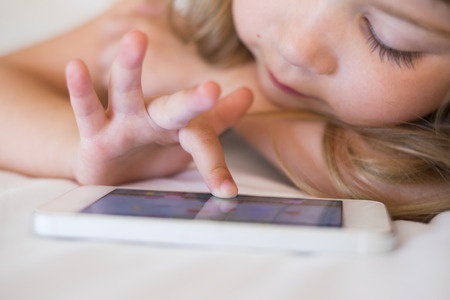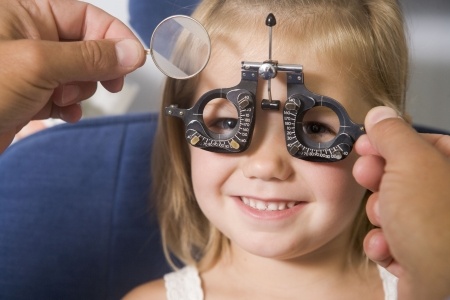Causes of eye pain in children
The common causes of eye pain in children are dry eyes, corneal foreign bodies or abrasions, allergic or infective conjunctivitis, blepharitis (inflammation of the eyelid margin), sinusitis and in-turned eyelashes. Rare causes are eye diseases such as glaucoma (a disease with high eye pressure) and uveitis (inflammation of the uvea or middle lining of the eyeball and iris). These causes are usually accompanied by some degree of eye redness.
The majority of cases of eye pain without redness in children may be “functional” in origin, which means to say that no cause could be identified. In a published study from New York, 91% of a group of 80 children ranging from 2 to 6 years of age were found to have no known cause for their complaints of eye pain (with no eye redness or drop in vision).
Nevertheless, all cases of persistent eye pain in children deserve attention to rule out possible conditions, as children may have difficulty communicating their eye sensations to caregivers.

Symptoms
Apart from eye pain, which is likely the only way many younger children are able to describe their feeling, descriptions of sharpness or dullness of the pain are also relevant. Sharp pain may be compared to pinpricks, while dull pain to a squeeze. Genuine sharp eye pain is usually accompanied by other signs such as eye blinking and shutting the eye altogether, such as when a foreign body gets into the eye.
A pain score can also shed light on the seriousness of the situation. Ask the child “if level 1 is not so painful and level 10 is very very very painful, can you tell me what level is your eye pain?”. Other signs of distress like crying and not wanting to play will further prove severity.
Watery eye, eye discharge, eye-rubbing and even drop in eyesight may be associated observations that will help identify the cause.
Diagnosis
A good history is important in any diagnostic process. In cases of eye trauma, many a time the story is not completely clear as the child may be too distressed over a classroom conflict, for example, to recount. If objects had been involved, such as a pencil or a ball aimed at the eye, it is important to check the items too.
Case in point from real-life experience: a leaded pencil with a broken tip became an important clue to the black particle lodged in the white of the eye. Any additional force could have spelt major disaster of a penetrating eye injury. Another case in point: scratches on the cornea from a muddy tennis ball that had landed on the eye may indicate a higher risk of microbial infection of a particular kind (called microsporidia), hence higher vigilance and different treatment are needed, compared to a squeaky clean and brand new ball.
A child who has a history of other allergic conditions such as asthma and eczema is more likely to suffer from allergic conjunctivitis. On the other hand, if one or more family members or playgroup friends are suffering from infective (most commonly viral) conjunctivitis, there is naturally a higher chance that the child has contracted the same infection.
Blepharitis (inflammation of the eyelid margin) may be subtle when mild, as the child and family may not be able to observe any signs. On examination by an eye doctor, often the meibomian glands (oil glands) of the eyelid margin will seem somewhat enlarged and inflamed. A clue may be previous occurrence of stye. Blepharitis and stye will cause discomfort and irritation of the eyes due to disturbance of the ocular surface and tear film.
Sinusitis may cause referred pain to the eye as sinuses are closely situated to the eye socket and share many sensory nerves with it.
In-turned eyelashes are often caused by a condition called epiblepharon of the lower eyelids in children when the overly taut eyelids cause the eyelashes to be directed upward and inward. In the mild cases, the eyes may feel somewhat uncomfortable and teary, while the severe cases may have blurring of vision from constant corneal abrasions.
Dry eyes usually present with relatively mild eye discomfort and tiredness, while severe cases may also present with fluctuation in eyesight and blurring.
Sore Eyes Treatment and Prevention

Treatment depends on the cause of the eye pain.
Infective cases need antibiotic eyedrops that are suitable for children, while allergic conjunctivitis will mostly settle with anti-allergic eyedrops, and avoidance of possible allergenic sources such as dust, dust mites and hairy pets. Lubricating eye drops, preferably preservative-free, are usually helpful for the majority of cases, be it dry eyes, cornea abrasions, in-turned eyelashes, conjunctivitis and even blepharitis.
In the majority of cases, a visit to the family doctor will elucidate the cause, and appropriate treatment in the form of eye drops will be sufficient. Persistent symptoms may need a referral to an eye specialist when a detailed eye examination using the magnifying slit-lamp examination and eye pressure check can be performed.
Common plagues of the modern household, which is the overuse of computer and handheld devices, often contribute to dry eyes.
In children, limiting the use of such devices may reduce eye fatigue and dryness. Minimising eye-rubbing is also necessary to prevent worsening the various conditions.
By Dr Daphne Han, Medical Director at SMG Vision Centre, a subsidiary of Singapore Medical Group is a veteran in the Ophthalmology industry with over 20 years of experience.
* * * * *
Like what you see here? Get parenting tips and stories straight to your inbox! Join our mailing list here.
Want to be heard 👂 and seen 👀 by over 100,000 parents in Singapore? We can help! Leave your contact here and we’ll be in touch.
























































